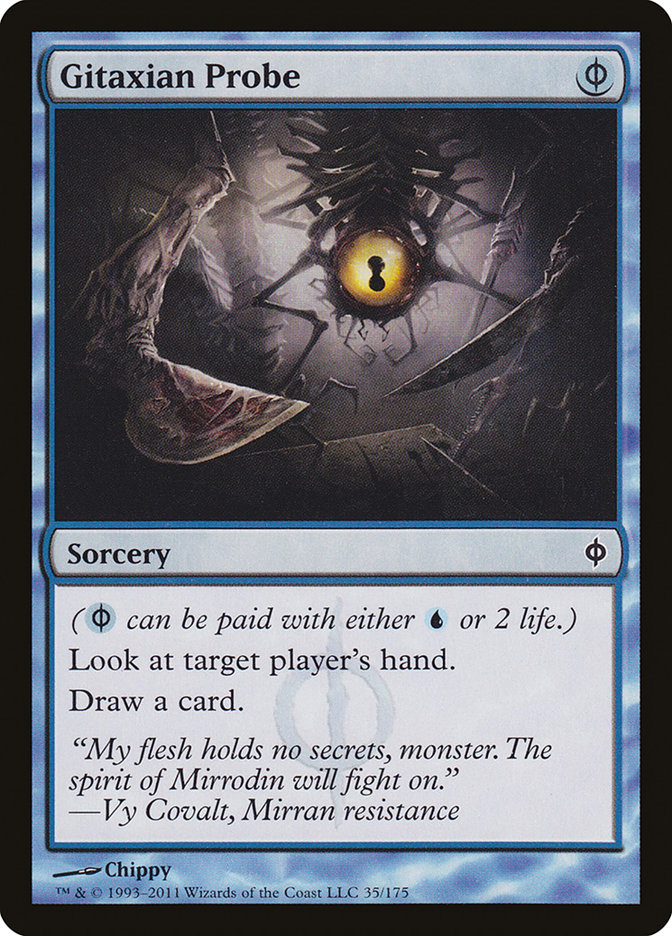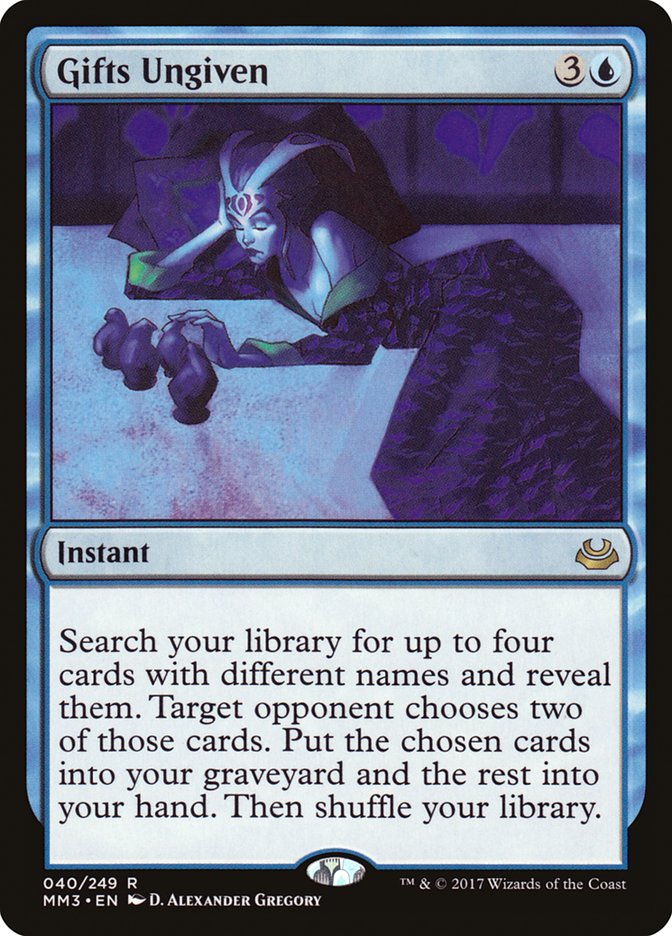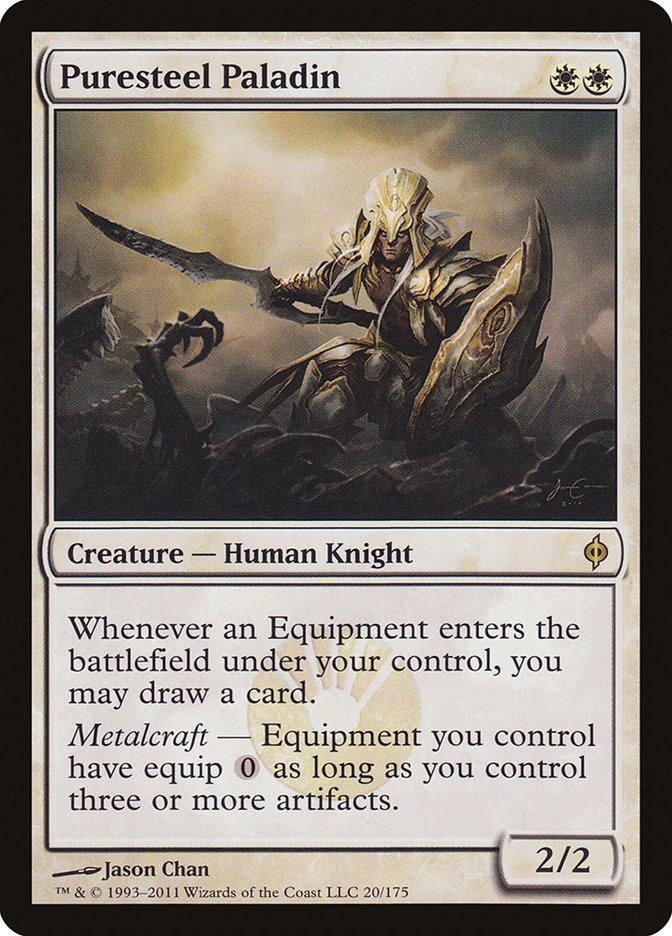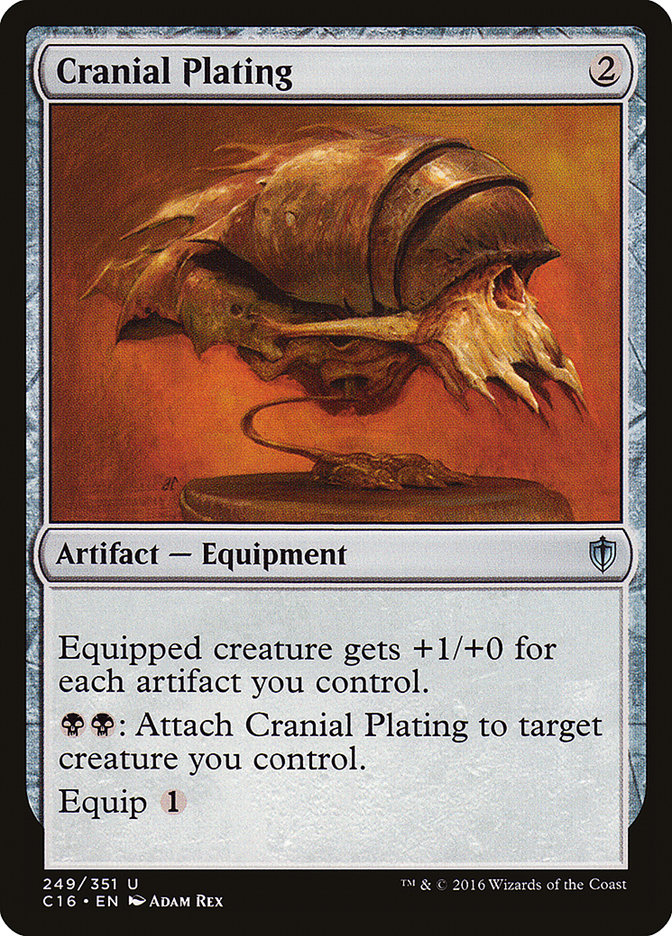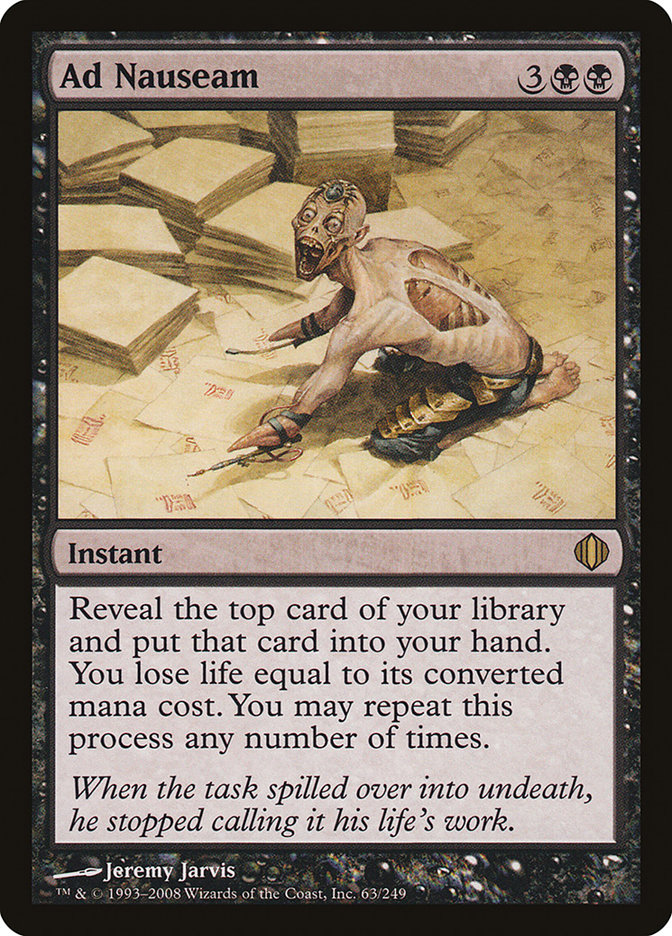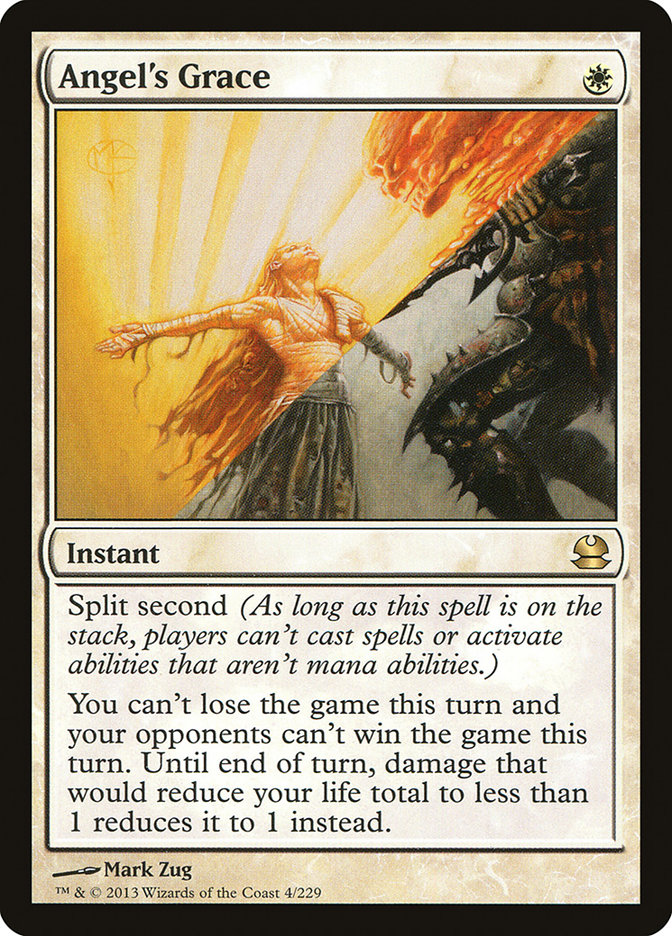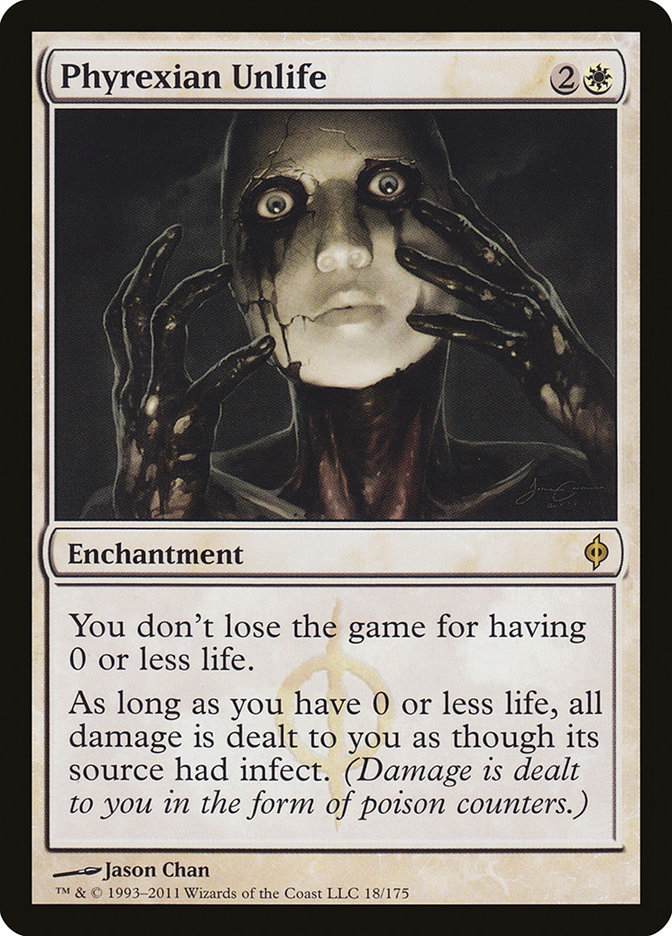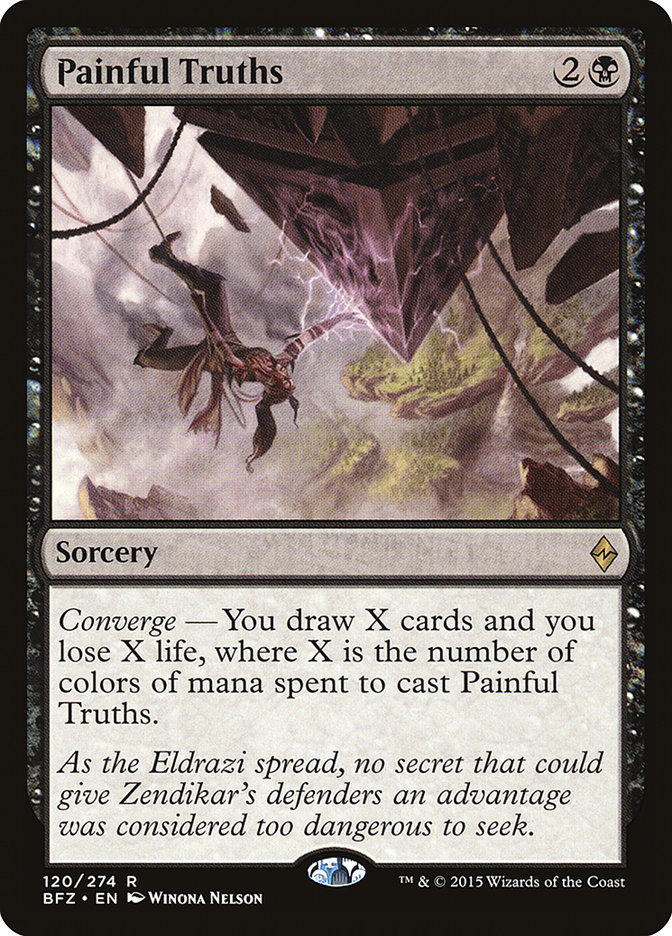For a while now, Modern has assumed a reputation for speed and, along with that, a lack of interactivity. The deck that the format revolved around (as much as it can around a single deck), Infect, forced everyone to be able to answer cheap creatures early and through various pump and protection spells, or else be able to race a deck that consistently killed on turns 3 and 4. Since the latter options were quite plentiful, it was quite difficult to build a deck that could interact positively with Infect without having major holes elsewhere.
Without a Modern Pro Tour forcing WotC’s hand with a ban and Modern remaining quite popular in spite of the various complaints levied against it, it seemed as though these times would never end, but the recent removal of Gitaxian Probe and Golgari Grave-Troll have fundamentally reshaped the Modern format beyond what I think anyone expected.
The emergent metagame is slower and more interactive without losing the incredible diversity of archetypes that defenders of Modern over the last year have rallied behind. This development is obviously a huge positive, but it importantly creates a new paradigm that we need to dissect and understand in order to build and tune our decks properly for the coming weeks.
Take a Breath
One of the primary mistakes we Magic players make in response to a ban or rotation when it comes to Standard is to try to retain too much continuity. What I mean by that is we start from our understanding of the previous format, evaluate what decks lose or gain from the change, and arrive at a conclusion about the new format. In this case, we would take the previous metagame, apply a reduced weight to Infect and Dredge, and see what emerges.
While such a process can provide a reasonable baseline, it fails to grapple with the format at its most fundamental level. The reduced weight of Infect and Dredge has created a ripple effect. Namely, the group of decks that you’re forced to interact with early or race has decreased in both size and diversity, making it a much easier group of decks to handle with the various interactive cards available in Modern. Moreover, potential new additions to this group, U/R Gifts Storm and Puresteel Paladin Combo, have heretofore been proven unable to compete with the top-tier decks. As a result, we’ve seen a resurgence in these archetypes far beyond what we might have expected from a more cursory analysis.
Of course, I’m saying all of this with the benefit of hindsight. I, along with many others, did not predict such a significant shift in the Modern landscape, but understanding why it has happened is helpful for analyzing future metagames as well as providing a baseline from which to move forward with the metagame we currently face. And it is the latter question which I will tackle today. How do we tune our decks to succeed in this new, slower metagame?
When attacking a disruption-heavy format, the natural question to ask is “What kind of disruption will my opponents have?” Right now, the answer is Thoughtseize and Inquisition of Kozilek. These discard spells have been ubiquitous in Modern from the beginning, and with Death’s Shadow taking the role of Public Enemy Number One with a full eight maindeck copies, discard abounds in Modern right now. We’re at the point where Tron decks are splashing black for Collective Brutality so even they have access to discard.
Unlike removal spells, there are no obvious counters to discard, no cards that simply say they cannot be targeted with them, with a few obvious exceptions like Obstinate Baloth. Still nothing you can build a strategy behind. You have to combat discard spells at the strategic level, and there are several ways to do so.
Start Here
First, you can get underneath them. Discard spells don’t interact with cards already on the battlefield, which makes them poor topdecks against a deck that spews its hand very quickly. Also, with a large amount of redundancy at the lower end of your curve, you can prevent a discard spell from punching a hole in your curve, allowing you to gain a tempo advantage in the early-game that may be too difficult to come back from.
Affinity and Revolt Zoo are the best decks at doing this, but notably, this is not a plan you can work into your deck via your sideboard; rather, it’s something your deck has to be devoted to from the start. So while it’s nice if you have this advantage right now, it’s of little help to anyone playing a different deck, so let’s move on to more generally applicable counter-strategies.
If you’re a combo deck, you need to build in some resilience. No amount of speed is going to beat a turn 1 Thoughtseize, so you have to win through their disruption. I wrote twoweeksago about Scapeshift / Valakut decks being good examples of these slower, more resilient combos and I still think they are solid choices right now, but it appears as though Ad Nauseam is best in show here, taking the trophy at the most recent Modern Open in Indianapolis.
Creatures (4)
Lands (20)
Spells (36)

The key here is the blue spells. Serum Visions, Sleight of Hand, and Peer Through Depths all make attacking the deck with discard spells quite difficult. Ideally, you show them a hand of mana and velocity spells and simply use the remaining copies to find the combo, but even if they strip you of a key combo piece, it’s not that difficult to search for another, provided you’re not under a lot of pressure.
Typically, high-disruption decks give opposing combo players plenty of time to set up, hoping that their interaction is enough to stop their opponent, and packing your deck with velocity spells lets you use that time to increase your consistency and resilience to said disruption. Combo decks that are built for speed falter here by relying almost solely on the top of their deck once their hand has been stripped away.
The added bonus for Ad Nauseam is that its white combo pieces, Angel’s Grace and Phyrexian Unlife, both provide additional time to combo off, which further increases its resilience to discard spells.
At a fundamental level, cantrips like Serum Visions and Sleight of Hand are good against discard because they disguise your hand and give you the flexibility to react to your opponent’s disruption. This principle also works in fair decks, letting you dig for an additional removal spell or threat as needed. And as we can see from the Top 8 in Indianapolis, two different Grixis decks made the elimination rounds.
Creatures (7)
Lands (22)
Spells (31)

Notably, Richie Sledz‘s Grixis Control list contains a whopping four maindeck copies of Ancestral Vision, a card whose stock has plummeted in Modern since it was unbanned last year, provided your name isn’t Corey Burkhart. The format was so fast that you couldn’t reliably wait four turns for it to come off suspend, but with players trading resources in the early-game, that time is much less of an issue. And the card advantage it provides is a game-breaker in any matchup where you’re both disrupting each other. If drawing one of the top three cards of your deck is good, drawing all three is better.
Discard spells bring with them a lot of efficient one-for-one removal like Lightning Bolt and Fatal Push to compensate for the discard not impacting the battlefield, and overcoming one-for-ones with three-for-ones is about as old as Magic strategy gets. We just have to get back into the habit of thinking that way after nearly a year of hyperaggression. Ancestral Vision and Painful Truths look to be great options right now, at the very least out of the sideboard and even in the maindeck, if you’re playing a bunch of cheap disruption yourself.
Of course, card advantage these days comes in many forms, and planeswalkers have largely supplanted straight card draw spells as the cards of choice. Liliana of the Veil and Liliana, the Last Hope are a key part of Death’s Shadow, and if you look at some of the sideboards of the Top 8 decks from Indianapolis you’ll see some powerful planeswalkers as well. Dan Musser has a singleton copy of Elspeth, Sun’s Champion, while Patrick Tilsen included two copies of Gideon, Ally of Zendikar in his Abzan list.
Creatures (14)
Planeswalkers (4)
Lands (22)
Spells (20)

Including these big threats to combat discard spells may seem counterintuitive at first because they sit in your hand for a while and are easy targets for Thoughtseize when your opponent knows the game is going long. And while things can play out that way sometimes, the goal in bringing in big threats is to maximize the top of your deck.
When one or both players are trading one-for-one early and often, the result is a game played on relatively few resources. You expect your first two, three, four threats to die and your opponent expects the same. Naturally, both hands empty and you’re left with a good, old-fashioned topdeck war. And while, yes, there is a lot of variance in topdeck wars, you can still set yourself up to be favored in them and gain a significant edge that way. Drawing Painful Truths and Gideon, Ally of Zendikar is a whole lot better than drawing another Fatal Push or Lightning Bolt. Often, the latter cards can trump a sequence of two or three okay spells from your opponent while you draw all lands afterward because they are that powerful, so even slim odds of topdecking them will shift the needle significantly in your favor.
The end result is Magic that looks closer to Standard than Modern has in recent months, haymakers ramming into each other with plenty of explosions. (Disclaimer: all explosions are metaphorical and in no way real.) It’s a sizable shift from the paradigm we’ve been under in Modern, and one that you must adapt to if you want to stay ahead of the metagame.
These kinds of changes are why relying too much on your knowledge of the previous format is so dangerous. A lot of the decks are the same because they are the most generically powerful strategies, but the gameplay is quite different and your decklists need to reflect the fundamental change in the format. Discard spells have been a part of Modern this entire time, but the constraints that the fast combo decks put on you and in particular your sideboard space limited your ability to combat them.
Whichever route you choose, going underneath, stocking your deck with cantrips, or going big, you should be more insulated against heavy disruption decks than at any point in the last year. Rather than being one potential answer to the default combo decks, heavy disruption decks are now the default of the metagame, and until that changes, they are the primary concern.


